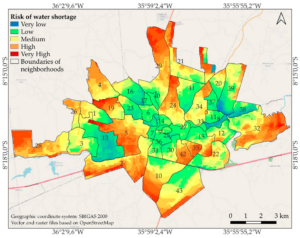GS Paper II – Governance

Context
The Ministry of Jal Shakti has accelerated the implementation of GIS-based mapping of water supply systems under the Jal Jeevan Mission (JJM). This initiative aims to ensure real-time monitoring, transparency, and efficiency in the delivery of functional household tap connections (FHTCs) across rural India.
What is GIS Mapping in Water Supply?
Geographic Information System (GIS) is a spatial technology used to capture, store, manipulate, analyze, and visualize geographical data. In water supply systems, GIS mapping helps in:
-
Identifying source locations
-
Mapping pipeline networks
-
Tracking leakages or disruptions
-
Monitoring water quality and availability
Key Features of GIS Integration in Water Supply:
-
Real-time data on water infrastructure
-
Mapping of all water sources (wells, tanks, reservoirs)
-
Decision-making support for planning and maintenance
-
Predictive analysis for drought-prone or water-stressed areas
Government Initiatives:
-
Jal Jeevan Mission (JJM): Emphasizes use of digital technologies, including GIS, IoT, and remote sensing.
-
National Hydrology Project (NHP): Implements GIS and satellite data for better water resource management.
-
Digital India push: Enhances the role of GIS in governance.
Benefits:
-
Transparency in fund utilization and project implementation.
-
Effective grievance redressal through public dashboards.
-
Resource optimization by reducing water loss.
-
Equity in access by targeting underserved areas.
Challenges:
-
Data accuracy and availability at grassroots level.
-
Capacity building in rural governance for GIS usage.
-
High initial cost of infrastructure and training.
-
Integration with legacy systems.




